It is widely known and accepted that the landings on Omaha Beach on D-Day were something akin to a disaster, everything that could go wrong went wrong and the success hung in the balance. At one point General Bradley, in charge of the landing at Omaha Beach, contemplated evacuating the survivors and abandoning the attempt. However, through courage, perseverance and determination the soldiers on the beach managed to fight their way off and ended the day with a small bridgehead on French soil.
Some things that went wrong could have been prevented, but others were just “bad luck.” Looking back at 10 of the things that went badly wrong that day it is even more astonishing that the soldiers made it off the beach at all.
Do not take this article as criticism on the soldiers that survived the slaughter on the beach but let it deepen your respect for them knowing all the things they had to contend with.
1. The Beach was perfect for an invasion
The 7000-yard long crescent-shaped beach presented a gently sloping tidal area averaging 300 yards between low and high-water marks. Above the tide line was a bank of shingle 8 feet high and up to 49 feet wide in some places. Beyond the shingle, first a concrete sea wall was built by the Germans and then steep escarpments or bluffs, dominating the whole beach and cut into by small wooded valleys or draws at five points along the beach.
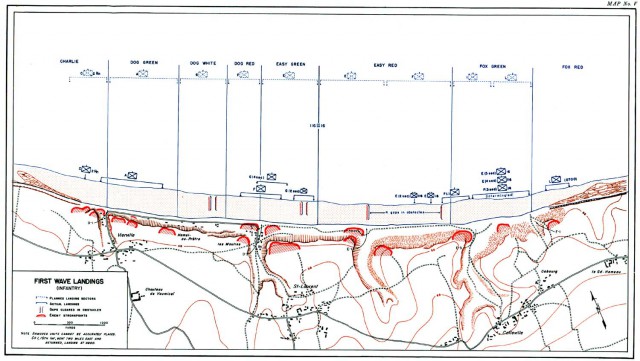
The 1st infantry division studied this beach before the operation and considered the shingle and sea wall as the first defensible piece of terrain. The Bluffs had the benefit that it would limit the deployment depth of the defending forces, and the steepness meant that the flat trajectory weapons had to be placed on the top of the cliff. Thus they could only fire on the beach with plunging fire. This was a disadvantage because the range and deflection had to be accurately determined in order to engage targets. Also, the bluff offered plenty of paths which the infantry could use to infiltrate behind the pillboxes and take them from the rear. They also saw the downside of these obstacles, but they did not outweigh the advantages.
Last but not least, the beach was first selected in 1943 because it was virtually undefended. Later, when the beach appeared to be well defended, the allies had no choice but to land on Omaha beach or the British beaches would be too far away from the Americans at Utah beach. This would all but invite the Germans to place strong forces between them making a link up extremely difficult and could enable the Germans to deal with each bridgehead separately.
Field Marshal Rommel once remarked to the garrison of a strong point overlooking the beach that “this section of the coast resembles the Bay of Salerno in Italy and therefore we should be on special guard against hostile landings!”
2. Germans were on Omaha beach in strength
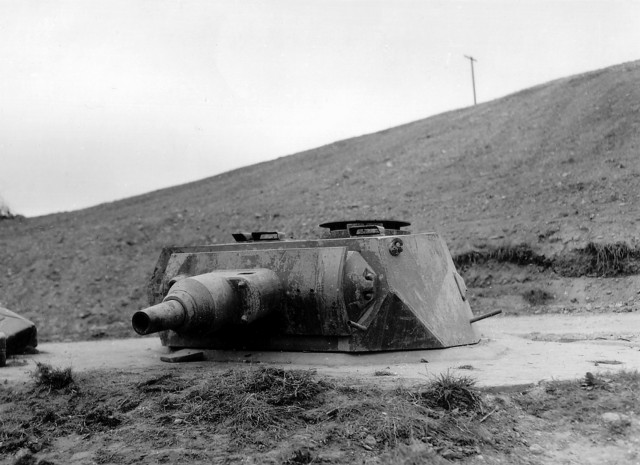
The Germans under Field Marshal Erwin Rommel had built formidable defenses to protect this enclosed battlefield. The waters and beach were heavily mined, and there were 13 strongpoints called Widerstandsnester (“resistance nests”). Numerous other fighting positions dotted the area, supported by an extensive trench system. The defending forces consisted of three battalions of the veteran 352nd Infantry Division. Their weapons were fixed to cover the beach with grazing enfilade fire as well as plunging fire from the cliffs. Omaha was a killing zone.
The Allies were not aware that the 352nd Infantry Division had moved in and took over the defenses from a weak static defense regiment that was earlier tasked to defend the beach. The 352nd was also put on alert on the night of June 5th/6th after the confused reports of Allied paratroopers landing all over the Contentin peninsula. The Germans were ready and waiting for an invasion.
3. Air Force bombardment failed completely
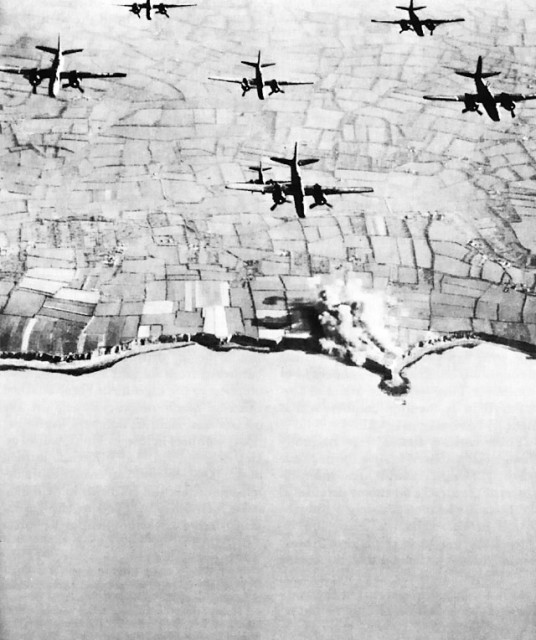
The great expectations for victory and destruction wrought by air power, on which a big part of the success of Omaha Beach hinged, were not met. The heavy bombers were meant to destroy the German defenses and should leave the beach pockmarked with craters for the infantry to take cover in.
However, they flew in straight from the sea as opposed to parallel to the coast and, to avoid bombing the assault forces, delayed the release of the bombs thereby missing Omaha beach completely. The defenses were left intact; there were no craters on the beach for cover, and some of the bombs hit inland as far as 3 miles from the beach. (Omaha beach, a flawed victory).
4. Naval bombardment was too short
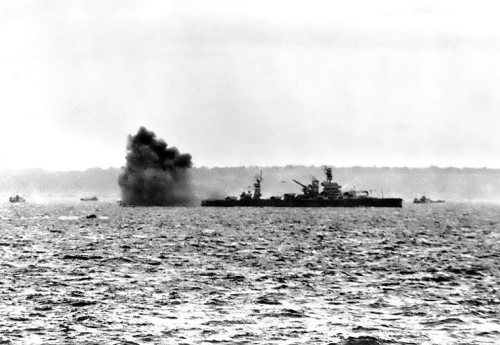
To ensure surprise and make it more difficult for the Germans to rush in reinforcements it was decided that no extended pre-invasion bombardment, like those in the Pacific, would take place. The Navy needed daylight to be able to hit their targets; the assault was to take place at low tide as early in the day as possible, and the airborne forces needed a full moon for their part of the invasion.
These three constraints made it a compromise inevitable; the Naval bombardment would start at first light and would fire on the beaches for only 30 minutes. Specially equipped landing craft would fire rockets which would be launched to cover the last stage of the assault crafts moving toward the beach; however, these rockets mostly fell short.
The short bombardment did not do enough damage, coupled with the failure of the air force; the infantry now had to face virtually intact defenses.
5. Limited use of special tanks
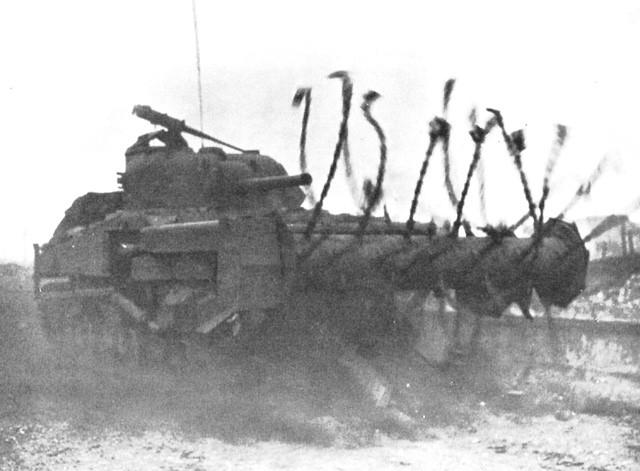
The British made extensive use of Hobart’s Funnies, specially adapted tanks to clear a path through minefields, bridge anti-tank ditches or that could fire heavy shells to destroy enemy bunkers. The Americans only chose to make use of the DD Tanks; these were Sherman Tanks that were modified so they could float and had their drive system altered so they could engage a screw for propulsion. This enabled them to be disembarked offshore and make their way to the beaches to provide instant fire support for the infantry.
Because of lack of time for training the crews or because they were not available in enough quantity for the British and the Americans, no other special tanks were used on Omaha beach. It is now thought that they would have made a difference.
6. Heavy Seas
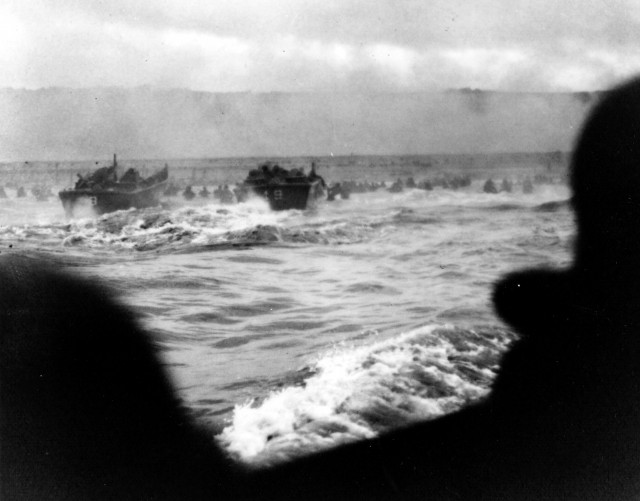
The less than ideal conditions for the invasion meant that the Allies had to cope with heavy seas. Ten landing craft were swamped by the rough seas before they reached the beach, and several others stayed afloat only because their passengers bailed water out with their helmets.
Seasickness was prevalent among the troops waiting offshore.
7. DD Tanks launched too far out
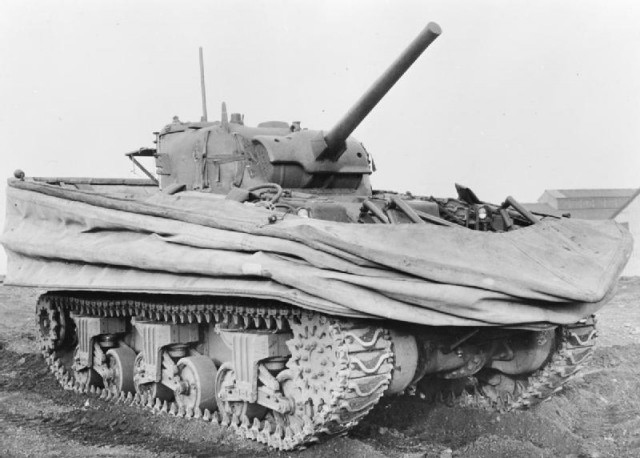
The plan was that DD tanks would land on the beach five minutes before the infantry and would be able to offer protection as well as fire support. However, of the 29 DD Tanks launched by the 743rd tank battalion, 27 were swamped in the rough sea and sank, only two made it to the beach.
The decision was made to carry the remaining DD tanks of the 743rd Tank battalion all the way to the beach. Coming in opposite the heavily defended Vierville draw, Company B of the 743rd Tank Battalion lost all but one of its officers and half of its DD tanks.
This caused the infantry to land without tank support, severely limiting their ability to deal with the enemy strong points and reducing their cover on the exposed beaches even further.
8. Strong currents caused troops to land all over the beach
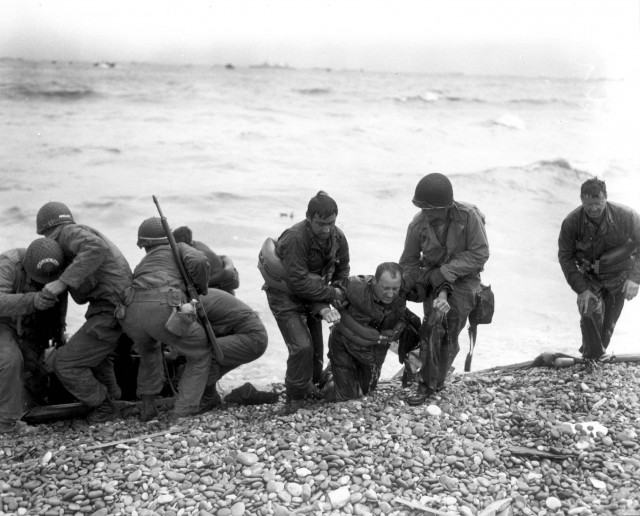
Besides the heavy seas, the strong current flowing from east to west caused the assault boats to be scattered all over the beach
Of the nine companies landing in the first wave, only Company A of the 116th RCT at Dog Green and the Rangers to their right landed where intended. E/116, aiming for Easy Green, ended up scattered across the two beaches of the 16th RCT area.
G/116, aiming for Dog White, opened up a 1,000-yard gap between themselves and A/116 to their right when they landed at Easy Green instead. I/16 drifted so far east it did not land for another hour and a half.
9. Troops were dropped off on sandbars
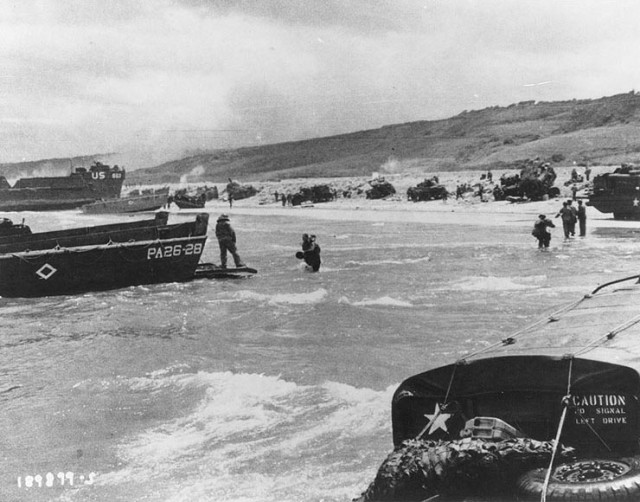
As infantry disembarked from the landing craft, they often found themselves on sandbars 50 to 100 yards out. To reach the beach they had to wade through water sometimes neck deep, and they still had 200 yards or more to go when they did reach shore.
Those that made it to the shingle did so at a walking pace because they were so heavily laden.
10. Engineers were unable to create lanes in the beach obstacles
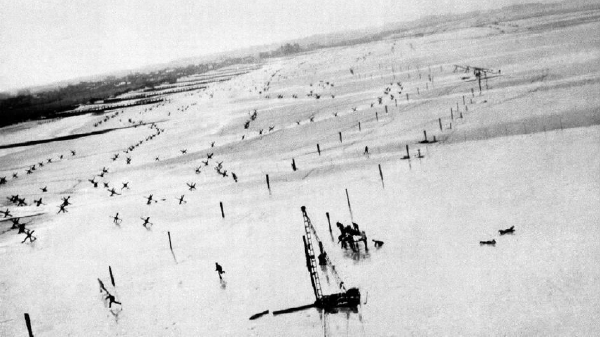
Like the infantry, the engineers had been pushed off their targets by the current, and only five of the 16 teams arrived at their assigned locations. Three teams came in where there was no infantry or armor to cover them. Working under heavy fire, the engineers set about their task of clearing gaps through the beach obstacles. A task made more difficult by the loss of equipment, and infantry passing through or taking cover behind the obstacles they were trying to blow up.
They also suffered heavy casualties as the enemy fire set off the explosives they were working with. Eight men of one team were dragging their pre-loaded rubber boat when artillery hit; only one survived the resulting detonation of their supplies.
Another team had just finished laying its explosives when the area was struck by mortar fire. The premature explosion of the charges killed or wounded 19 engineers, as well as some of the nearby infantrymen. Nevertheless, the engineers succeeded in clearing six gaps, one each at Dog White and Easy Green on the 116th RCT front, the other four at Easy Red on the 16th RCT front. However, they had suffered casualties of over 40%.
Because the lanes could not be properly cleared in time and because of the rising tide, follow-up waves had no clear paths through the, now submerged and invisible, beach obstacles. This caused further casualties from ships hitting mined obstacles, congestion of boats trying to find a way in and confusion on where troops were supposed to land.
